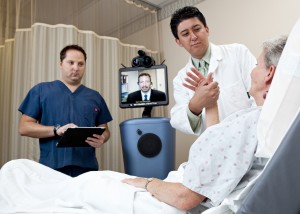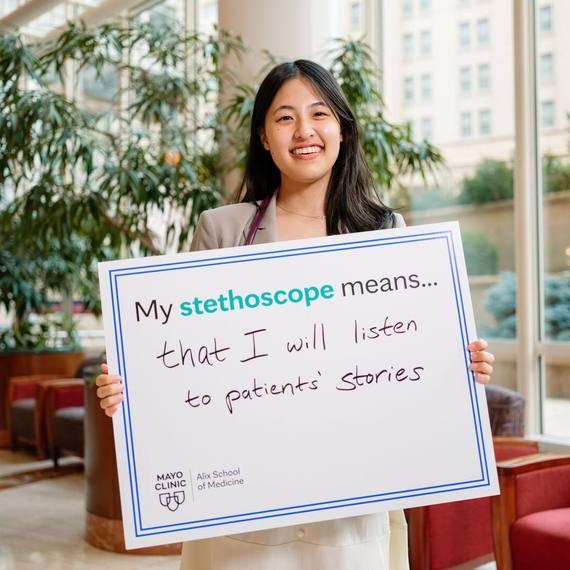-
Mayo Clinic Researchers Show Telestroke is Cost-Saving
PHOENIX — Jan. 16, 2014 — Researchers have found that using telemedicine to deliver stroke care, also known as telestroke, appears to be cost-effective for society. The research was recently published in the American Journal of Managed Care.
In telestroke care, the use of a telestroke robot  allows a patient with stroke to be examined in real time by a neurology specialist elsewhere who consults via computer with an emergency room physician at another site which may not have neurology specialists (typical rural hospitals). Mayo Clinic provides telestroke care by acting as a single source of specialized care – a hub – to connect a network of multiple hospitals – spokes.
allows a patient with stroke to be examined in real time by a neurology specialist elsewhere who consults via computer with an emergency room physician at another site which may not have neurology specialists (typical rural hospitals). Mayo Clinic provides telestroke care by acting as a single source of specialized care – a hub – to connect a network of multiple hospitals – spokes.
"This study shows that a hub-and-spoke telestroke network is not only cost-effective from the societal perspective, but it's cost-saving,” says neurologist Bart Demaerschalk, M.D., director of the Mayo Clinic Telestroke Program, and the lead investigator of the telestroke cost effectiveness study. “We can assess medical services, like telemedicine, in terms of the net costs to society for each year of life gained."
The study estimates that compared with no network, a modeled telestroke system consisting of a single hub and seven spoke hospitals may result in the appropriate use of more clot-busting drugs, more catheter based interventional procedures and other stroke therapies, with more stroke patients discharged home independently. Despite upfront and maintenance expenses, the entire network of hospitals realizes a greater total cost savings.
When comparing a rurally located patient receiving routine stroke care at a community hospital, a patient treated in the context of a telestroke network incurred $1,436 lower costs and gained 0.02 quality-adjusted life-years over a lifetime.
The improvement in outcomes is associated with reduced resource use (inpatient rehabilitation, nursing homes, caregiver time). Although treating patients in a telestroke network is associated with higher upfront costs due to the setup of the telestroke network and more costly treatments during the initial hospitalizations, it can potentially lead to cost savings over a lifetime.
“The results serve to inform government organizations, insurers, healthcare institutions, practitioners, patients, and the general public that an upfront investment in telemedicine and stroke network personnel can be justified in our health system,” Dr. Demaerschalk says.
The study was conducted by researchers at Mayo Clinic, Georgia Health Sciences University, Analysis Group.
Mayo Clinic was the first medical center in Arizona to do pioneering clinical research to study telemedicine as a means of serving patients with stroke in nonurban settings, and today serves as the hub in a network of 13 spoke centers. Since the telestroke program began more than 4,000 emergency consultations for stroke between Mayo stroke neurologists and physicians at the spoke centers in Arizona have taken place. Mayo Clinic Telestroke is represented nationally, with hubs in Arizona, Florida, and Minnesota and serves more than 20 healthcare institutions in seven states.
Disclosures: Authors Drs. Jeffery Switzer and Demaerschalk have served as consultants for Genentech, Inc. Authors L. Fan and Drs. J. Xie and E. Wu are employees of the Analysis Group, which received funding from Genentech, Inc. Author K.F. Villa is an employee of Genentech, Inc.
###
About Mayo Clinic
Recognizing 150 years of serving humanity in 2014, Mayo Clinic is a nonprofit worldwide leader in medical care, research and education for people from all walks of life. For more information, visit 150years.mayoclinic.org, www.mayoclinic.org and newsnetwork.mayoclinic.org.







